Binance, one of the world’s leading cryptocurrency exchanges, has gained significant attention for its competitive fee structure. Understanding how these fees are calculated and applied is crucial for any trader looking to engage in the buying, selling, or trading of cryptocurrencies on the platform. The fees at Binance are multifaceted, depending on various factors such as the type of trade—be it spot, futures, margin, or derivatives—as well as your payment method and trading volume.
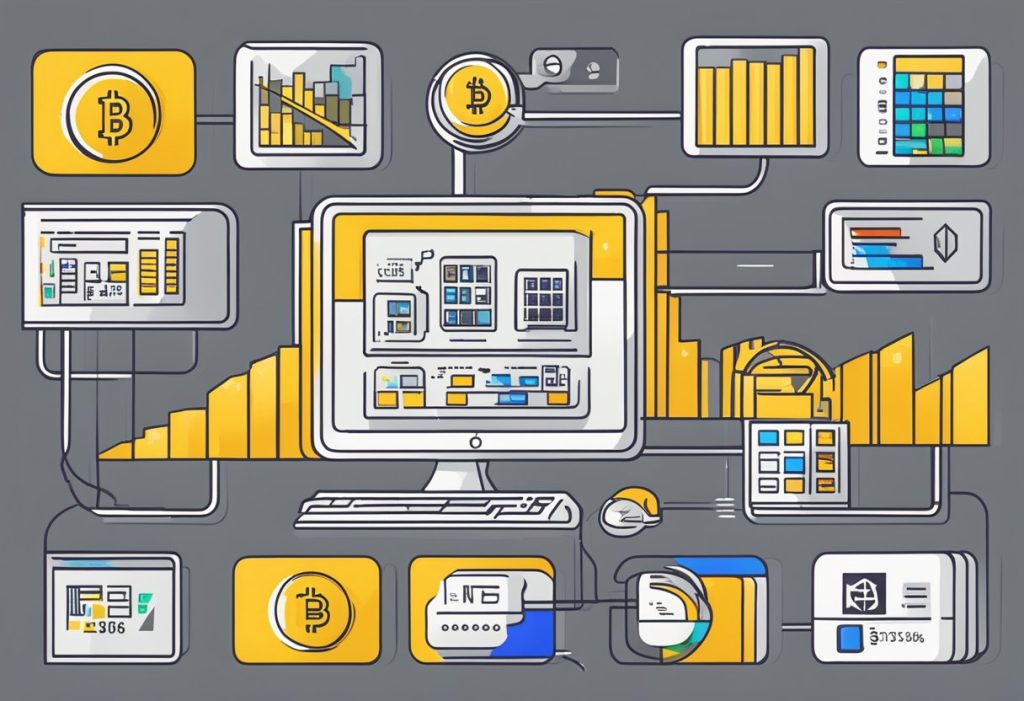
One of the key advantages of Binance is the potential for fee discounts, especially when using BNB, Binance’s own cryptocurrency, to pay for transaction fees. In addition, Binance offers a tiered fee structure that rewards users with higher trading volumes or VIP status with lower fees. This dynamic pricing is designed to enhance the trading experience by providing incentives for frequent trading and investment on the platform, which can significantly impact the cost efficiency of trading activities and potential returns. Moreover, it’s important to note how Binance’s fees compare to other crypto exchanges, as this may influence your choice of platform.
Key Takeaways
- Binance’s fee structure is competitive and rewards users who trade more frequently or hold VIP status.
- Using BNB to pay transaction fees on Binance can offer users significant discounts.
- Fee comparisons are essential as they influence the choice of exchange and overall user experience in crypto trading.
NOT YET A BINANCE USER?
Join today with the Binance Referral Code for exclusive benefits or read our Binance Review to learn why Binance is the right exchange for you!
GET UP TO 50% OFF TRADING FEES WITH THE CODE “WUPBLUYN”
Understanding Binance Fees Structure
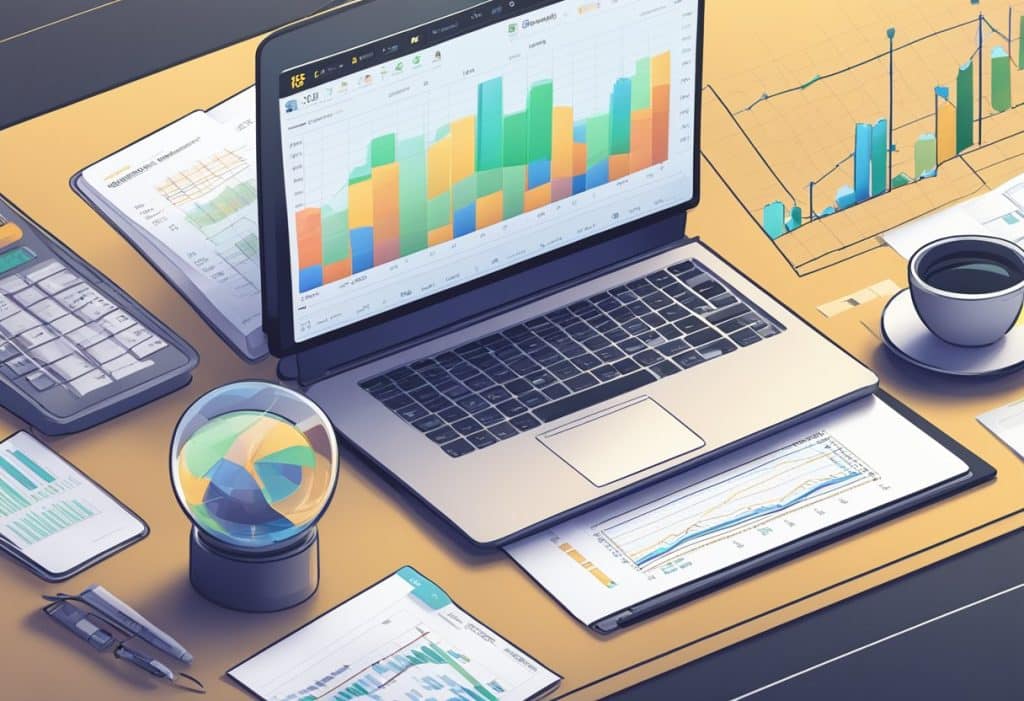
Binance, a leading cryptocurrency exchange, implements a structured fee system for its trading operations. This section breaks down the primary fees you’ll encounter on the platform, specifically spot, futures, and margin trading, as well as the costs associated with deposits and withdrawals.
Spot Trading Fees
- Maker Fee: 0.1%
- Taker Fee: 0.1%
When you trade on the spot market, you’re charged a flat fee of 0.1% per trade, whether you’re the maker or the taker. Using Binance Coin (BNB) for transactions may offer a discount on these fees. For VIP users, the fees vary according to the VIP level.
Futures Trading Fees
- USDT-M Futures Maker/Taker: 0.02%/0.04%
- Coin-M Futures Maker/Taker: 0.01%/0.05%
With futures trading, fees are notably lower. USDT-margined futures have a maker fee of 0.02% and a taker fee of 0.04%, while Coin-M futures feature a 0.01% maker fee and a 0.05% taker fee. Binance’s tiered fee structure applies here too, with potential reductions for higher volume traders.
Margin Trading Fees
Binance’s margin trading fees follow the spot market structure with an additional variable interest rate charged on borrowed funds. The rates for borrowing and the potential discounts through BNB usage can be checked on Binance’s fee schedule page.
Deposit and Withdrawal Fees
- Deposit Fees: Free for cryptocurrencies; varies for fiat.
- Withdrawal Fees: Varies based on the currency and network.
Cryptocurrency deposits on Binance are generally free. However, when depositing fiat currencies, the fees can vary depending on the payment method. Withdrawals incur a fee that is currency-specific and depends on the chosen blockchain network for the transaction. Always check the latest fee schedule for the most accurate information.
Fee Schedule For Different Trading Options
Binance provides a structured fee schedule for various trading activities. As you navigate through the platform, it’s important to be aware of the fees associated with each type of trading option.
Spot Market Fees
The spot market is the underlying market where cryptocurrencies are exchanged immediately. On Binance, your spot market trading fees depend on whether you’re a regular or VIP user. The standard trading fee is 0.1% for each transaction; however, utilizing the Binance Coin (BNB) for transaction fees offers you a 25% discount.
Futures Contracts Fees
Futures on Binance allow you to trade contracts based on the future price of cryptocurrency pairs. The fees for futures contracts slightly differ from spot market trading and are tier-based. They are influenced by your 30-day trading volume and Binance Coin balance, which determine your VIP level.
Options Trading Fees
Options trading on Binance includes a premium fee paid upfront, and an exercise fee only if the option is exercised. The exercise fee is tied to the settlement price at order completion, and is usually capped at a specific percentage of the option’s value.
Leveraged Tokens Fees
For leveraged tokens, giving traders exposure to leverage without the risk of liquidation, Binance charges daily management fees as well as fees on buy and sell orders. Binance’s leveraged tokens maintain a transparent fee structure so you can manage your cost effectively while trading.
Binance Coin (BNB) Use and Fees Discounts
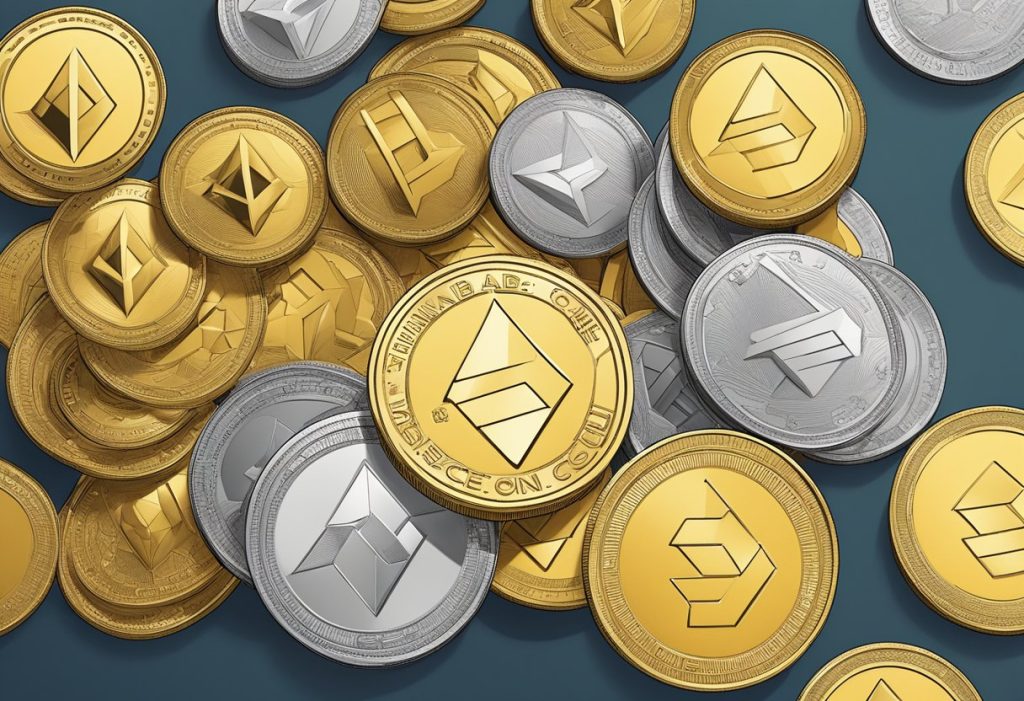
Binance Coin, commonly referred to as BNB, is an integral part of the Binance ecosystem. As an exchange token, it offers you a tangible way to reduce the fees you pay for various operations on the Binance platform.
When you choose to pay for your trading fees with BNB, you’re entitled to a substantial discount which can significantly lower your trading costs. The benefits extend beyond simple transactions, encompassing Spot, Margin, and Futures trading.
Here’s a quick overview of the discounts you can enjoy:
- Spot and Margin Trading Fees: By using BNB, you receive a 25% discount.
- Futures Trading Fees: BNB usage provides a 10% discount.
Moreover, if you’re a VIP user, you get an additional discount atop your VIP status benefits.
How to Apply BNB Discounts:
- Hold BNB in your Binance account.
- Enable the option to use BNB for fees in your account settings.
Binance Fee Discount Structure:
| BNB Held | Spot Trading Fees Discount | VIP Discount Addition |
|---|---|---|
| <1 BNB | 25% | – |
| VIP 1+ | 25% | Additional VIP Rate |
Note: Discounts and rates are subject to change based on Binance policies.
Keeping BNB in your account not only facilitates lower fees but also ensures these benefits are automatically applied to your transactions, simplifying your trading experience. Ensure to monitor your BNB balance to maintain eligibility for these discounts.
VIP and Tiered Fee Structure
Binance offers a tiered fee structure that provides lower trading fees for users with higher trade volumes. Your trade volume includes all spot market activities from Spot, Margin, and Trading Bots, calculated in a USD equivalent amount.
As part of the VIP program, VIP fees are applicable across all Binance products universally. To attain a certain VIP level and enjoy reduced fees, you must meet specific trade volume and BNB balance requirements stipulated by Binance. Advancing through the VIP levels allows you to benefit from progressively lower trading fees.
Here is how the VIP levels correlate with trading fees:
- VIP 0: Users start at this level with standard trading fees.
- VIP 1 and above: Enjoy reduced spot trading fees. The more you trade, the lesser the fees you incur.
For precise rates and information, it’s best to refer directly to Binance’s fee schedule, but here’s an example of how fees decrease as your VIP level increases:
| VIP Level | Maker Fee | Taker Fee |
|---|---|---|
| VIP 0 | 0.1% | 0.1% |
| VIP 1 | 0.09% | 0.1% |
| VIP 2 | 0.08% | 0.1% |
| … | … | … |
| VIP 9 | Lowered fees based on Binance criteria |
Note: You have the option to use Binance Coin (BNB) to pay for fees, which grants an additional 25% discount on the already reduced VIP fees.
To maintain your VIP status or ascend to higher tiers, ensure that you meet both the trade volume and BNB balance criteria over a 30-day period, as these factors are crucial in the determination of your fee structure on Binance.
How Fees Impact Trade Execution and Returns

Trading on Binance, as with any exchange, incurs costs that can affect your financial outcomes. Understanding how fees impact trade execution and returns is essential for effective trading.
Maker-Taker Model Explained
The Maker-Taker model is an exchange pricing scheme where fees are differentiated based on whether you are providing liquidity (maker) or taking liquidity away (taker). As a maker, you place orders that add to the exchange’s order book, waiting to be filled. When you place an order that matches immediately with an existing one, you are classified as a taker. Makers typically enjoy lower fees because they contribute to the market’s liquidity, while takers normally pay higher fees because they reduce liquidity.
- Maker Fee: Starts as low as 0.02% and can be reduced further based on the trade volume.
- Taker Fee: Slightly higher starting at 0.04% and can also decrease with higher trading volume.
Importance of Trade Volume in Fees
Trade volume plays a critical role in determining the fees you’re charged on Binance US. Higher trade volumes often translate to lower fees, since Binance uses a tiered fee structure, incentivizing more significant trading activity.
- Incentive: Large trade volumes can push you into a higher VIP tier, leading to potentially substantial fee discounts.
- Consideration: When you buy or sell assets, the exchange rate includes the costs of these fees, making it important to account for them in your financial calculations.
Comparison To Other Exchanges
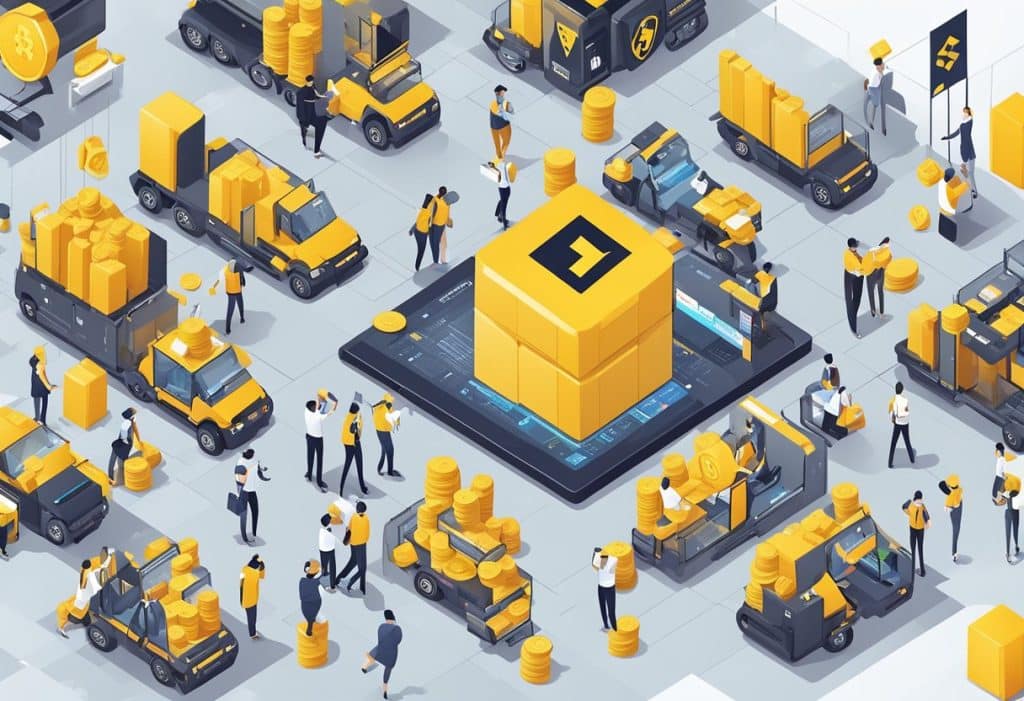
When comparing Binance fees to other exchanges, it’s important to consider various factors such as maker/taker fees, geographical differences, and specific discounts. Binance is known for offering competitive rates and a structure that can benefit you based on your trading volume and chosen market pairs.
Binance vs Coinbase Fees
Binance:
- Maker Fee: Up to 0.1%
- Taker Fee: Up to 0.1%
- Discounts: 25% off using Binance Coin (BNB)
Coinbase:
- Trading Fee: 1.49% to 3.99%
- Convenience Fee: 0.50%
- No discount for using their Coinbase USD Coin (USDC)
In contrast to Coinbase, Binance tends to offer lower trading fees, which can be further reduced by using Binance Coin (BNB). Conversely, Coinbase fees are generally higher, with a percentage-based trading fee and a standard convenience fee.
Binance US and Global Fee Variations
Binance operates on a global scale but has a dedicated platform for United States users, namely Binance.US. Here’s how the fees differ:
Binance Global:
- Maker Fee: As low as 0.02%
- Taker Fee: As low as 0.04%
- No fee for selected Tier 0 pairs
Binance.US:
- Maker/Taker Fee: From 0.0375% to 0.45%
- Instant Buy/Sell Fee: 0.5%
Binance US generally provides a similar fee structure to the global platform but with slightly higher rates. The fees you incur depend on your trading volume and the type of trades you perform.
International Fees and Considerations
For international users, Binance fees can be influenced by local regulations and available trading pairs. For instance:
- Hong Kong and China may have different fee structures due to regulatory environments.
- Trading with USDT pairs may attract varied fees compared to other cryptocurrencies.
International Fee Highlights:
- Different tiers may apply based on volume and location.
- Some international pairs can trade with reduced fees or no fees at all.
Do note that Binance international platform may offer a different selection of cryptos and trading types, which can affect the fees you’re charged. Make sure to check the specifics for your region and the pairs you’re interested in to optimize your trading costs.
Payment Methods and Associated Fees
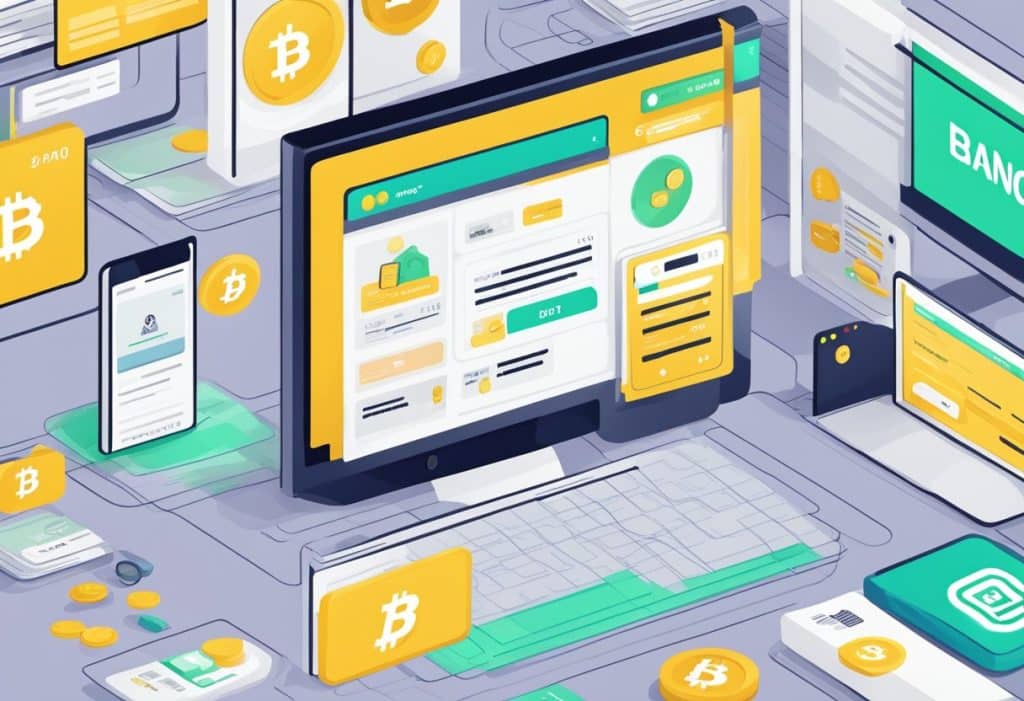
When funding your Binance account or making withdrawals, you need to be aware of the fees that come with different payment methods. This information can help you choose the most cost-effective option.
Bank Transfer and Card Purchase Fees
Bank Transfers: For deposits via bank transfer, Binance doesn’t charge a fee from their end. However, your bank might apply transaction fees, and it’s essential to check with your bank for any costs involved.
Debit Card Purchases: Transactions using a debit card are subject to a fee which is typically higher compared to bank transfers. The exact fee will vary depending on the total purchase amount and the card issuer’s policies.
Crypto Deposit and Withdrawal Methods
Deposits: Depositing crypto assets into your Binance account usually incurs no fee. However, each blockchain has its network fee when you transfer, which is not controlled by Binance.
Withdrawals: Binance applies a withdrawal fee for taking out your crypto assets, and this depends on the currency. For example, withdrawing Bitcoin (BTC) costs 0.0005 BTC, while Ethereum (ETH) incurs different charges based on network conditions. Fees for certain assets may vary on Binance US compared to Binance’s main platform. These fees are set to cover the transaction costs associated with the blockchain network used.
Always ensure to look at the most updated fee schedule on Binance’s website as these fees can change based on market conditions.
User Experience and Navigating Fees

Binance has prioritized an intuitive user experience while maintaining transparency regarding its fee structure, allowing you to navigate costs effectively, whether you’re a beginner or an advanced user.
Intuitive Platforms and Fee Transparency
Your experience on Binance is catered to with an intuitive interface, making it straightforward to manage your crypto wallet and engage with trading. Fees are clearly outlined, so you’re not met with surprises. For example:
- Withdrawal fees are constant at 0.0005 BTC for BTC withdrawals.
- Trading fees stand at 0.10% for both makers and takers, reduced further with increased volume and Binance coin (BNB) holdings.
- Paying fees with BNB provides a 25% discount.
This fee information is accessible on various platform pages, ensuring that you can plan your trading activities with full knowledge of the costs involved.
Setting Expectations for Beginners and Advanced Users
Beginners are greeted with straightforward information on fixed trading fees, enabling a smooth initiation into trading. Additional support is available in the form of guides and help sections that explain how to use BNB for an additional fee discount.
For advanced users, tier-based fees offer more competitive rates, reflecting higher trading volumes. The provision of trading bots and advanced order types further refines the trading experience on Binance. You can verify your trading fee level within your account settings, providing transparency and control over your trading costs.
Remember, trading fees decrease as your volume increases and can be dynamically reviewed based on your activity on the platform.
Minimizing Fees and Maximizing Profits
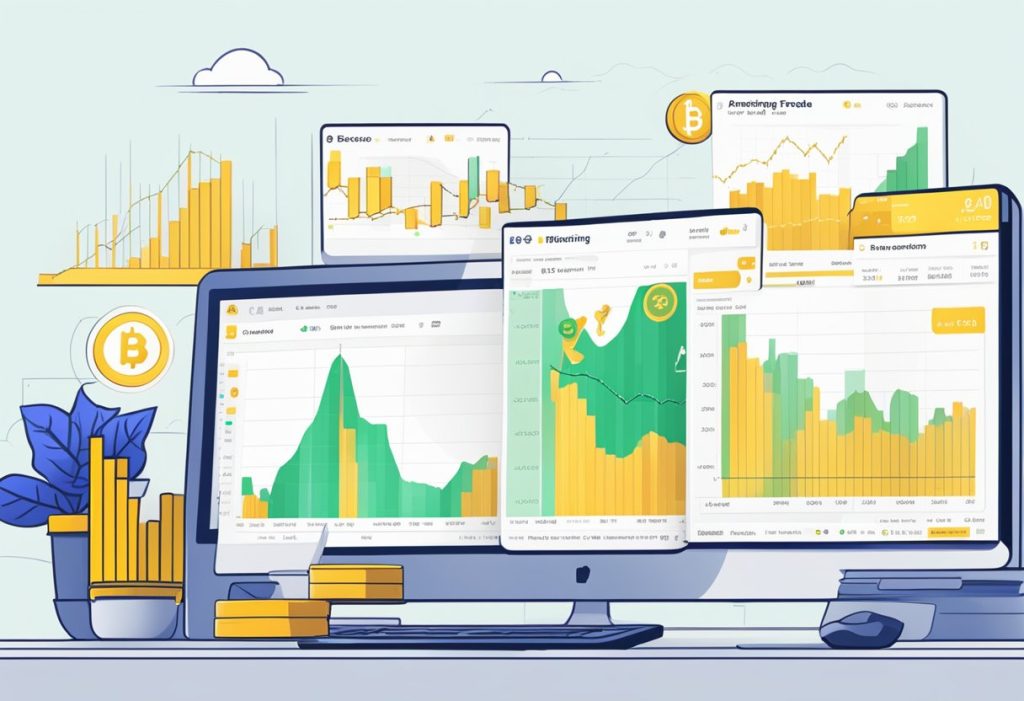
When trading on Binance, understanding and minimizing fees is crucial to maximizing your profits. Here are key strategies to keep your costs low:
- Trading Volume and VIP Program: Your trading fees on Binance are influenced by your trade volume. Higher volume can move you into a more favorable fee tier. The VIP Program offers reduced maker and taker fees as you climb through the levels. Stay active to benefit from lower charges.
- Utilize Limit Orders: Placing limit orders allows you to set a specific price at which you want to buy or sell. This makes you a maker, adding liquidity to the market, often rewarding you with lower fees than taker fees, which are incurred when orders are filled immediately at the current market price.
- Binance Coin (BNB) for Fees: Paying trading fees with BNB provides a direct discount on standard trading fees. Ensure you hold BNB in your account and enable the option to pay fees in BNB.
- Employ Trading Strategies: Incorporate trading strategies that focus on minimizing costs, such as avoiding short-term trading which can rack up fees. Consider a longer-term approach or using ‘spot trading’ strategies to lower the number of transactions you make.
| Activity | Maker Fee | Taker Fee |
|---|---|---|
| Standard Trading | 0.1%* | 0.1%* |
| BNB Discount | 0.075%* | 0.075%* |
| VIP 1 Level | 0.09%* | 0.1%* |
*Fees are illustrative and subject to change based on Binance’s latest fee structure.
By staying informed about fee structures and strategically managing your trades, you can effectively reduce costs and improve your profitability on Binance.
Future Developments and Predictions
In the dynamic landscape of cryptocurrency, your awareness of upcoming innovations and social media trends can heavily influence trading fees. Understanding these factors is crucial in anticipating fee structures on platforms like Binance.
Blockchain and Cryptocurrency Innovations
Blockchain technologies constantly evolve, leading to more efficient and cost-effective transactions. Expect improvements in smart contract functionality and layer 2 solutions, which may lower the demand on main networks and reduce fees. As NFTs (Non-Fungible Tokens) grow in variety and utility, platforms may integrate NFT-based transaction models, potentially altering fee dynamics uniquely for NFT trades.
Crypto market trends play a significant role in fee adjustments. Should markets trend towards higher volatility, the demand to enter and exit positions quickly might lead Binance to adapt its fee structure to maintain competitiveness and liquidity.
Social Media Influence on Fees
Twitter has become a pivotal platform for cryptocurrency updates, where influencers and key industry players can sway market sentiment. What you observe on Twitter can preempt shifts in trading volume, indirectly impacting fee percentages due to sudden surges or drops in network activity. Stay attentive to these sources for real-time insights that can inform your fee-related decisions.
For instance, announcements related to Binance fee updates might surface first on social media channels, providing you with a strategic advantage. Platforms, including Binance, routinely monitor social media trends to stay aligned with user expectations, which can lead to promotional fee discounts or temporary adjustments to attract more users and enhance trade volumes.
Frequently Asked Questions
In this section, you’ll find answers to common queries about the various fees on Binance, helping you navigate the platform’s fee structure with confidence.
How are withdrawal fees determined on Binance?
Withdrawal fees on Binance are dependent on the blockchain network’s specific conditions and transaction fees at the time of your withdrawal. These fees fluctuate due to network congestion and cryptocurrency-specific transaction costs.
Can you calculate fees automatically on Binance trades?
Yes, Binance provides an automatic calculation of trading fees at the time of each trade execution. This calculation includes applicable discounts if you’re using Binance Coin (BNB) for payment.
What are the typical futures trading fees on Binance?
The futures trading fees on Binance vary based on your VIP level. Typically, they can start from 0.02% for makers and 0.04% for takers, with incremental discounts applying as your trading volume increases.
Are there any fees for depositing funds into a Binance account?
No, Binance does not charge fees for depositing cryptocurrencies to your Binance wallet. However, be aware of potential fees from your corresponding wallet or exchange that you are transferring assets from.
How do Binance spot trading fees compare to those of other exchanges?
Binance’s spot trading fees are competitive, starting at 0.1% for regular users, with a 25% discount if you use BNB. These rates are often lower than other leading cryptocurrency exchanges.
What is the fee for transferring funds between Binance accounts?
Transferring funds between Binance accounts is typically free, and there are no fees charged by Binance for these internal transfers.
